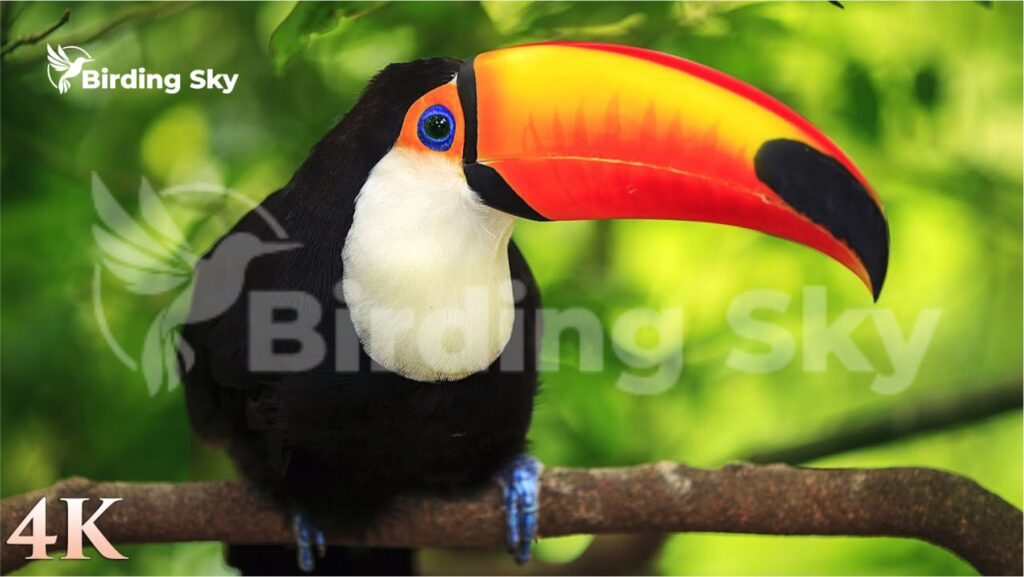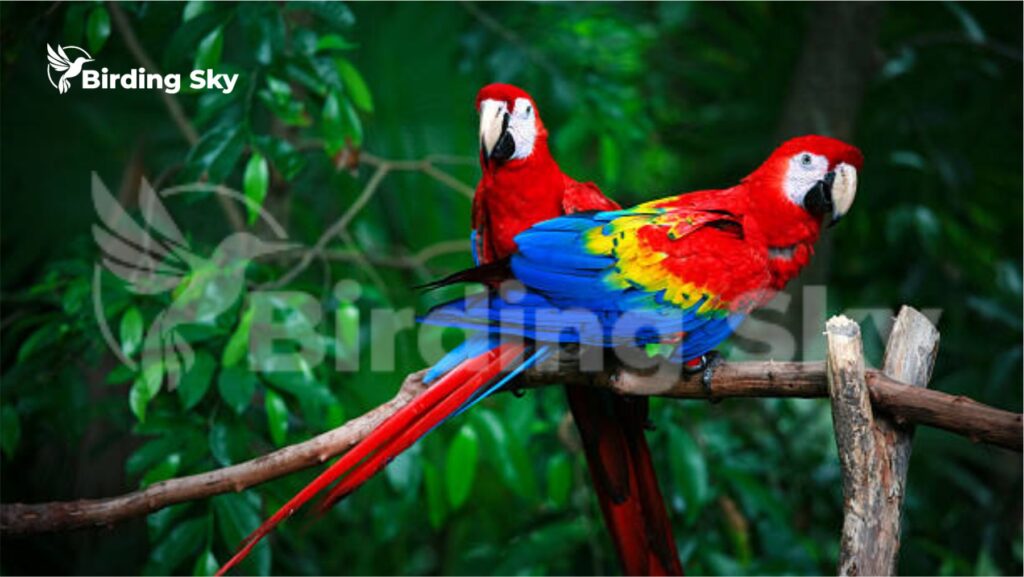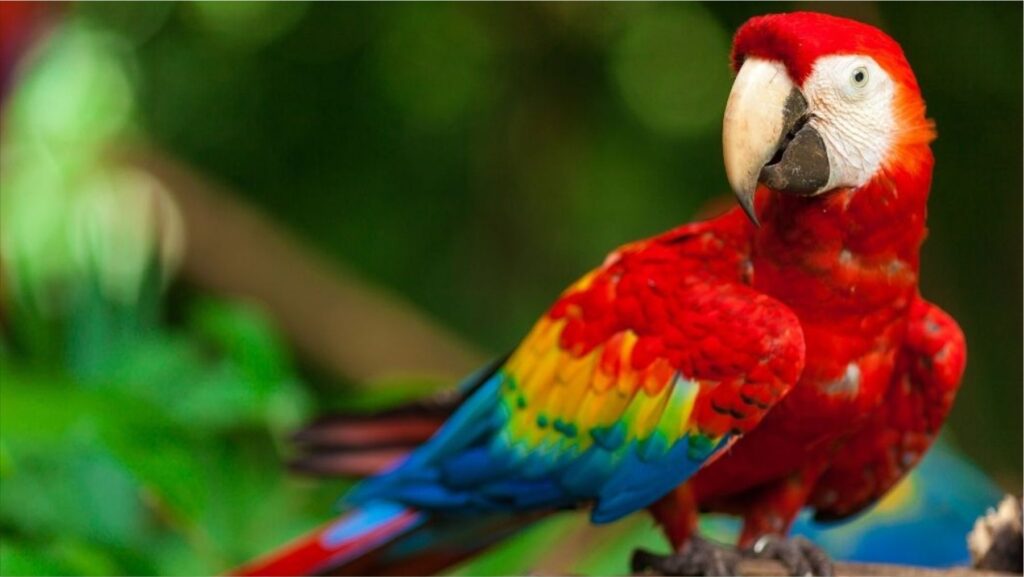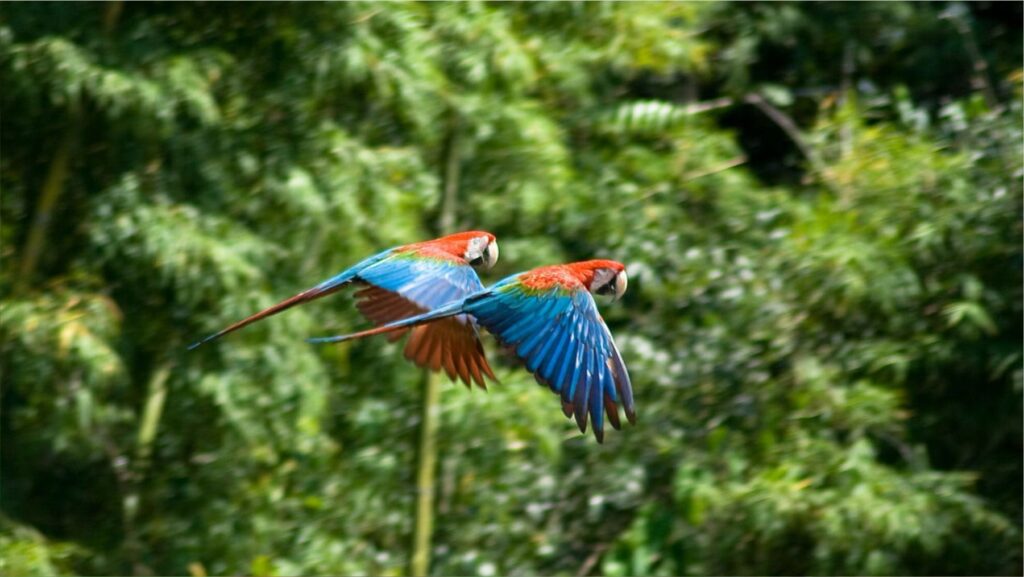Explore the Amazing Jungle Birds of the Rainforest! Have you ever wondered how rainforests stay so lush and vibrant? Spoiler alert: It’s all thanks to some feathery, squawking residents. From parrots flaunting their Technicolor Dreamcoats to toucans rocking those oversized beaks, jungle birds are the unsung heroes of the rainforest.
But before you go planning your next bird-watching adventure, let’s dive into how these avian marvels keep the ecosystem ticking. And trust me, it’s way more fascinating than your average nature documentary.
Diverse Species of Jungle Birds in the Rainforest
Colorful Parrots and Their Habitats
Parrots are one of the most vibrant birds in the rainforest. Their feathers show off an amazing array of colors, from bold reds and blues to striking greens and yellows.
These birds are often found in the dense canopies of the rainforest, where they can easily hide among the leaves and branches.
Many parrot species, like the Scarlet Macaw, depend on specific tree species for food and nesting sites.
Did you know parrots are highly social? They often live in flocks, chattering away with their friends all day long.

They have strong, curved beaks that are perfect for cracking nuts and seeds, their primary diet.
- Scarlet Macaw: Known for its brilliant red, yellow, and blue feathers; often found in large flocks.
- Blue-and-yellow Macaw: Easily identified by its striking blue top and bright yellow underside.
- Amazon Parrot: These green-feathered birds are experts at mimicking human speech.
Parrots’ intelligence and ability to mimic sounds make them fascinating creatures. However, their habitats are under threat due to deforestation.
Efforts to protect these colorful birds are crucial to maintaining the rainforest’s biodiversity.
Unique Characteristics of Toucans
Toucans are another quintessential rainforest bird, easily recognizable by their large, colorful bills.
Their bills might look oversized, but they are surprisingly light, made mostly of keratin.
The toco toucan has one of the largest bills, which it uses to reach fruits on branches too small to support its weight.
Toucans are primarily frugivores, meaning they eat mostly fruit. However, they also consume insects and small reptiles.
They can be seen hopping from tree to tree in search of food, using their long bills to pluck fruits effortlessly.
- Keel-billed Toucan: Known for its rainbow-colored bill; it’s truly a sight to behold.
- Toco Toucan: Has the largest bill relative to its body size among toucans.
- Chestnut-mandibled Toucan: Features a dark bill with a striking yellow upper mandible.
Toucans are social birds, often seen in pairs or small flocks. They communicate with a variety of calls and songs.
Preserving their rainforest home is vital, as toucans play a key role in seed dispersal, helping to maintain the ecosystem.
Predatory Birds of the Rainforest
While many jungle birds are known for their beauty, others are prized for their hunting prowess.
Predatory birds play an important role in the rainforest’s food chain, keeping populations of other animals in check.

The Harpy Eagle is one of the most powerful birds of prey, capable of hunting monkeys and sloths.
These birds have keen eyesight, sharp talons, and strong beaks to capture their prey.
They often soar high above the canopy, scanning for potential meals with their sharp vision.
- Harpy Eagle: A formidable hunter with powerful claws and keen vision.
- Black Hawk-Eagle: Known for its distinctive black and white plumage and strong hunting skills.
- Crested Eagle: A large bird of prey with a striking crest and powerful build.
Predatory birds help maintain the balance of the rainforest ecosystem by controlling the populations of smaller animals.
Conserving these apex predators is essential for the health of the rainforest.
Endangered Species and Conservation Efforts
Unfortunately, many jungle bird species are endangered due to habitat loss and other human activities.
Conservation efforts are in place to protect these incredible creatures and their habitats.
Organizations like the Rainforest Trust work tirelessly to preserve essential habitats for endangered birds.
By supporting conservation initiatives, we can help ensure these birds continue to thrive.
- Scarlet Macaw: Threatened by deforestation and the pet trade.
- Harpy Eagle: Faces habitat loss but is protected in many areas through conservation projects.
- Great Green Macaw: Struggles with both habitat destruction and illegal trafficking.
Educating the public about the importance of these birds can lead to greater support for conservation efforts.
Protecting the rainforest is not just about saving birds; it’s about preserving a whole ecosystem.
The Role of Jungle Birds in Rainforest Ecosystems
Pollination and Seed Dispersal
In the vibrant world of rainforests, many birds act as key pollinators, helping to fertilize plants. They often feed on nectar from flowers, and in doing so, they transfer pollen from one plant to another.

Take hummingbirds, for instance. These little guys hover around flowers, sipping nectar while spreading pollen. It’s like they’re nature’s very own delivery service!
Another crucial role jungle birds play is in seed dispersal. Some birds eat fruits and later excrete the seeds in different locations. Think of them as nature’s gardeners, planting seeds across the forest.
For example, toucans and hornbills often consume large fruits and move around before digesting and expelling seeds. This habit ensures that new plants grow and thrive in varied spots throughout the rainforest.
“Birds are vital for the regeneration of forest flora, ensuring the survival and spread of plant species.”
Without these feathered friends, many plants would struggle to reproduce and spread. The forest would be less diverse and less resilient.
- Pollination: Birds like hummingbirds transfer pollen as they feed on nectar.
- Seed Dispersal: Birds such as toucans move seeds across the forest, aiding in plant growth.
How cool is it that birds play such a fundamental role in keeping the rainforest lush and teeming with life?
Birds as Predators and Prey
Jungle birds also have an essential role as both predators and prey within the rainforest ecosystem. They help maintain the balance of the food web.
Many birds control insect populations by feeding on them. Birds like the insect-eating warblers can feast on hundreds of bugs a day, keeping populations in check.
On the other hand, jungle birds can also be prey. Larger animals like snakes and big cats often hunt them. This predation keeps bird populations balanced and prevents any one species from becoming too dominant.
“The predator-prey dynamics involving birds ensure a balanced and thriving ecosystem.”
By being both predators of insects and prey for larger animals, jungle birds help sustain the intricate web of life in the rainforest.
- As Predators: Birds keep insect populations under control.
- As Prey: Birds are a food source for larger predators.
Imagine a rainforest without birds–insects might overrun the place, and predators would have less food!
Symbiotic Relationships with Other Species
Jungle birds often form symbiotic relationships with other species, benefiting both parties involved. These alliances are like partnerships that enhance survival and health.

Take mutualism, for example. Some bird species have relationships with mammals where both gain something. The oxpecker bird, seen on large mammals, eats ticks and parasites off their hosts. The bird gets a meal, and the mammal stays healthy.
Other birds might help by warning animals of approaching predators, acting as the rainforest’s early warning system.
“These symbiotic relationships highlight the interconnectedness of rainforest species.”
Such interactions are vital for the health and sustainability of the ecosystem. They show just how much rainforest species rely on one another.
- Mutualism: Birds like oxpeckers eat parasites off mammals, helping both species thrive.
- Warning Systems: Birds alert other animals of predators, increasing survival chances.
How fascinating is it that these birds and other species work together so seamlessly?
“Protected areas have been shown to significantly increase bird populations.”
Community involvement is another key strategy. When locals are engaged in conservation, efforts are more successful.
Education programs teach the importance of preserving bird habitats and discourage poaching.
- Protected Reserves: Safe zones where birds can live without human interference.
- Community Engagement: Local communities playing active roles in conservation.
- Educational Outreach: Teaching the value of birds to younger generations.
These combined efforts have led to remarkable successes. For instance, certain endangered species have seen population increases.
With continued support and innovative strategies, we can ensure jungle birds not only survive but flourish.
Conclusion
So there you have it—a kaleidoscope of feathery drama and eco-vitality in the rainforest. From the eye-popping plumage of parrots to the beady-eyed gaze of predatory birds, these creatures are the unsung heroes of their ecosystems. They’re not just Instagram-worthy; they’re the backbone of rainforest health, aiding pollination, seed dispersal, and maintaining a delicate balance of prey and predator.
Frequently Asked Questions
What makes parrots in the rainforest so colorful?
Nature’s eye-catching fashionistas, parrots use bright colors to attract mates and camouflage amid vibrant foliage.
Why do toucans have such oversized beaks?
Ever tried eating cereal with a spoon? Toucans use their big beaks to grab food in hard-to-reach places and impress their bird buddies.
Which are the most common predatory birds in the rainforest?
Swooping in like feathered ninjas, Harpy eagles and hawks are the top predators, keeping the bird food chain in check.
